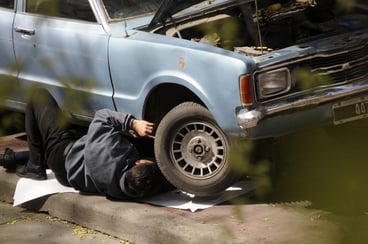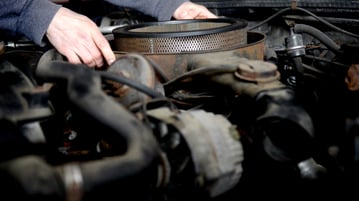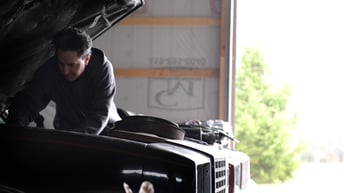 We use the mileage and age of vehicles to determine a lot of things: when to service, what's worth repairing, and how to deal with maintenance issues. At the end of the day, age and mileage are ultimately the markers that let drivers know how long a car can stay on the road. But times are changing thanks to advances in vehicle technology, and vehicles today can last a lot longer than they used to. For modern automotive DIYers, that presents a big opportunity to put their skills to good use.
We use the mileage and age of vehicles to determine a lot of things: when to service, what's worth repairing, and how to deal with maintenance issues. At the end of the day, age and mileage are ultimately the markers that let drivers know how long a car can stay on the road. But times are changing thanks to advances in vehicle technology, and vehicles today can last a lot longer than they used to. For modern automotive DIYers, that presents a big opportunity to put their skills to good use.
While it takes time, effort, and usually a little research, the rising age and mileage of the average vehicle on the road is a huge motivator when it comes to undertaking automotive DIY work. In this post, we'll discuss how this trend in vehicle mileage and age influences the work DIYers choose to undertake.
Mileage and DIY are Closely Tied
 According to Mintel's study on DIY Auto Maintenance, most recently updated in 2017, the auto parts and accessories aftermarket is expected to grow through 2021 at an average rate of 3.7%. By that year, the market is forecasted to grow to $51.1 billion. But what's driving these increases? Among others, two of the largest driving factors for this increase are increased driving mileage on the average vehicle, and older vehicles tending to stay on the road longer.
According to Mintel's study on DIY Auto Maintenance, most recently updated in 2017, the auto parts and accessories aftermarket is expected to grow through 2021 at an average rate of 3.7%. By that year, the market is forecasted to grow to $51.1 billion. But what's driving these increases? Among others, two of the largest driving factors for this increase are increased driving mileage on the average vehicle, and older vehicles tending to stay on the road longer.
Mintel's study found that as of 2015, the average age of vehicles on the road sat around 11.5 years old, and the company expects the average age to continue to rise. Additionally, the number of highway miles driven in the U.S. have now exceeded pre-Recession levels and continues to increase.
The extended vehicle lifetimes require a greater need for maintenance and repair, and DIYers are willing to spend the money of the replacement parts they need in order to undertake maintenance projects on their own. In light of those trends, there are so many reasons why DIYers are choosing to perform their own auto repairs. Saving time and money are huge motivators for DIY work in general, as is a simple love of the process and the vehicles.
However, in terms of working on older cars in particular, home maintenance is a viable option for vehicles that are no longer covered by warranty or perhaps aren't worth the cost of the work a repair should could do. This is all not to mention that a higher mileage means more wear and tear on a vehicle and more attention required from a repair standpoint. When a driver's main concern is keeping the car running, their confidence in their DIY skills is a valuable asset.
DIY Maintenance Despite Model Year
 Automotive DIY has carved out an important place in today's do-it-yourself culture for many reasons, both by choice and necessity, depending on the DIYer. Mileage and age play a large role in the need to repair and maintain vehicles in light of the extended demands on their parts and systems. Many choose the path of home maintenance as a hobby because they truly enjoy the process and independence it affords, but more practical influences also play into those decisions, too.
Automotive DIY has carved out an important place in today's do-it-yourself culture for many reasons, both by choice and necessity, depending on the DIYer. Mileage and age play a large role in the need to repair and maintain vehicles in light of the extended demands on their parts and systems. Many choose the path of home maintenance as a hobby because they truly enjoy the process and independence it affords, but more practical influences also play into those decisions, too.
Beyond age and mileage, the willingness of service providers to maker DIY easier for the consumer, as well as the convenience of online parts shopping and troubleshooting, millions of DIYers turn to themselves instead of a mechanic for a wide variety of vehicle repairs. Considering how much we depend on our cars today, the choice to DIY the work is a big one, but the benefits of doing so can far outweigh the challenges when DIYers have the right motivation and support.




